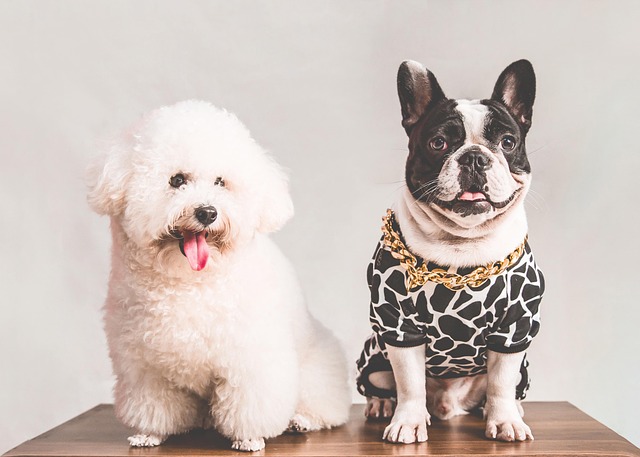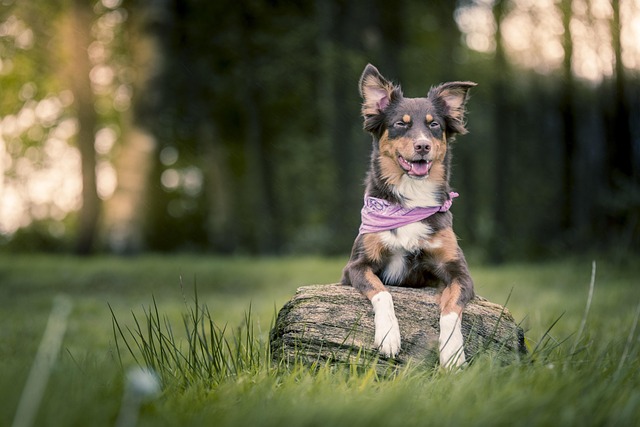
How to train a dog to bite back?
Training a dog to have defensive biting ability is not merely about releasing its attack instincts. Instead, it is based on a high level of trust between humans and dogs.
Watching your dog lying on the floor and chewing on toys out of boredom, have you ever thought about adding a new experience full of challenges and fun to its life? Agility training, a project that used to shine in professional competitions, can now enter ordinary families and become a wonderful way for owners and dogs to interact closely and grow together. Training your dog to do agility at home can not only strengthen its physique and stimulate its potential, but also weave a close and warm emotional bond through repeated training and interaction.
Dogs are born with strong energy and a desire to explore. Agility training is like an "energy release station" tailored for them. From a biological point of view, the ancestors of dogs need to run, jump, and cross obstacles in the wild to hunt and avoid natural enemies. This innate athletic instinct may cause behavioral problems such as house demolition and anxiety if it is not properly released in modern pet life. Agility training, by setting up a series of obstacles and challenges, allows dogs to fully utilize their body flexibility and coordination in the process of crossing, crawling, and jumping, satisfying their inner desire for exercise and exploration.
The first task of conducting agility training at home is to arrange the training venue reasonably. There is no need for professional runways and expensive equipment. The courtyard, spacious living room, and even the corner of the balcony at home can become a training stage. Use waste cardboard boxes to build a simple tunnel, turn chairs upside down to form hurdles, use stair railings and ropes to make hanging objects... These seemingly simple homemade props are a paradise full of novelty and challenges in the eyes of dogs. When arranging the venue, you must fully consider the size and ability of the dog. The height and spacing of the obstacles must be moderate to ensure the safety and feasibility of the training.
 The training process is a journey full of patience and wisdom. First of all, you must start with basic obedience training, so that the dog can master the commands such as "sit", "lie down", and "stop". This is the cornerstone of agility training. Just like building a high-rise building, only by laying a solid foundation can you move forward steadily. When the dog is comfortable with these instructions, simple obstacle training can be introduced. Taking hurdles as an example, the owner can first guide the dog to approach the obstacle, use snacks or toys as bait, and encourage it to try to cross. When the dog successfully completes the action, the owner's joyful praise and timely rewards will make its eyes flash with confidence. This positive reinforcement method can make the dog feel happy and accomplished in training, and gradually build up enthusiasm and trust in training.
The training process is a journey full of patience and wisdom. First of all, you must start with basic obedience training, so that the dog can master the commands such as "sit", "lie down", and "stop". This is the cornerstone of agility training. Just like building a high-rise building, only by laying a solid foundation can you move forward steadily. When the dog is comfortable with these instructions, simple obstacle training can be introduced. Taking hurdles as an example, the owner can first guide the dog to approach the obstacle, use snacks or toys as bait, and encourage it to try to cross. When the dog successfully completes the action, the owner's joyful praise and timely rewards will make its eyes flash with confidence. This positive reinforcement method can make the dog feel happy and accomplished in training, and gradually build up enthusiasm and trust in training.
As the training deepens, the difficulty of the obstacles can be gradually increased, but each improvement must follow the dog's rhythm. Some dogs are naturally bold, learn quickly, and can quickly adapt to new challenges; while some dogs are relatively cautious and need more time and patience to overcome fear. The owner should be like a close friend and keenly capture the dog's emotional changes. When the dog is hesitant in the face of a new obstacle, don't rush to force it, but encourage it with a gentle tone, or demonstrate it in person, and tell it with actions "Don't be afraid, I will accompany you". In repeated attempts and breakthroughs, the dog's self-confidence will continue to increase, and the tacit understanding between the owner and the dog will become deeper.
During the training process, safety is always the top priority. When dogs are exercising, they are prone to ignore potential dangers due to excitement. The owner should always pay attention to the dog's condition to avoid fatigue and injury caused by overtraining. At the same time, regularly check the training props to ensure their stability and prevent accidents caused by damage to the props. Every careful inspection is a protection for the dog's health, just like parents always pay attention to the safety of their children and cannot tolerate any carelessness.
When the dog can smoothly complete a series of agility movements and shuttle freely between obstacles, the sense of accomplishment and joy are indescribable. Looking at the once ignorant little guy, who can now confidently cross obstacles, the owner's heart is full of pride and relief. This is not only a testimony to the dog's growth, but also a precious result of the joint efforts and mutual companionship of the owner and the dog. In the days to come, these training times will become beautiful memories, and whenever I think of them, the corners of my mouth will unconsciously rise.
Training dogs for agility at home is a journey full of love and miracles. It allows us to stop in our busy lives and feel every moment with the dog with our hearts. Through training, dogs gain health and happiness, and owners gain warmth and healing from their companionship.

Training a dog to have defensive biting ability is not merely about releasing its attack instincts. Instead, it is based on a high level of trust between humans and dogs.

When we watch dogs sniffing around with curiosity, their smart eyes flashing with the light of exploration, we will realize their innate instinct of exploration.

When your lovely Teddy suddenly bares its tiny teeth and nibbles at your fingers or clothes, or accidentally scratches your skin during play,

In the morning, sunlight filters through the window into the room as you carry a bowl of carefully prepared dog food toward the shepherd dog.

In the world of dogs, smell is their unique language for perceiving the outside world and a mysterious bridge for communicating with humans. Dogs' sense of smell is dozens or even hundreds of times more sensitive than that of humans.

When dogs explore the world with their teeth, furniture often becomes their "teething victims." This not only frustrates owners but also reveals the deeper needs behind their behavior.